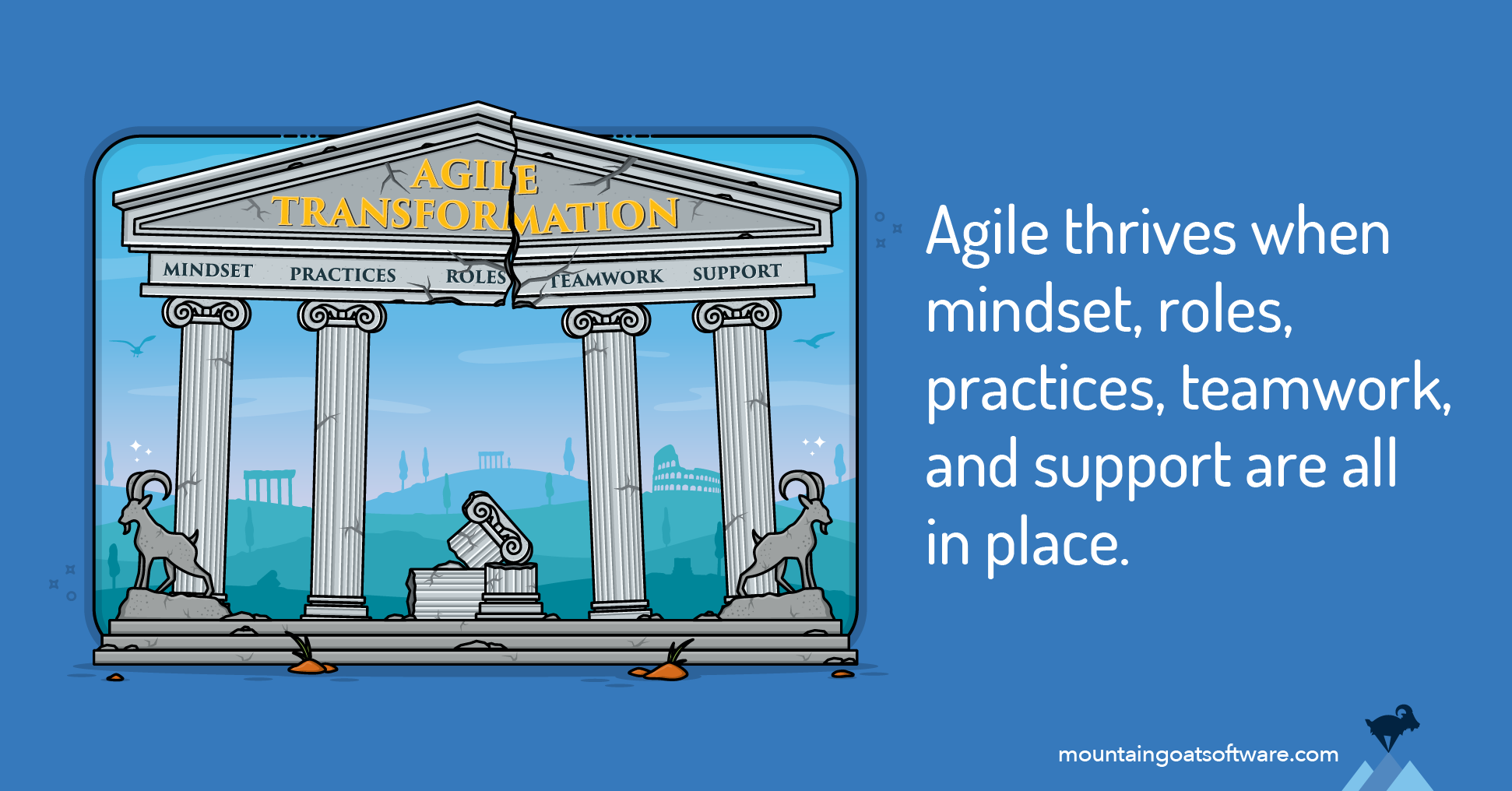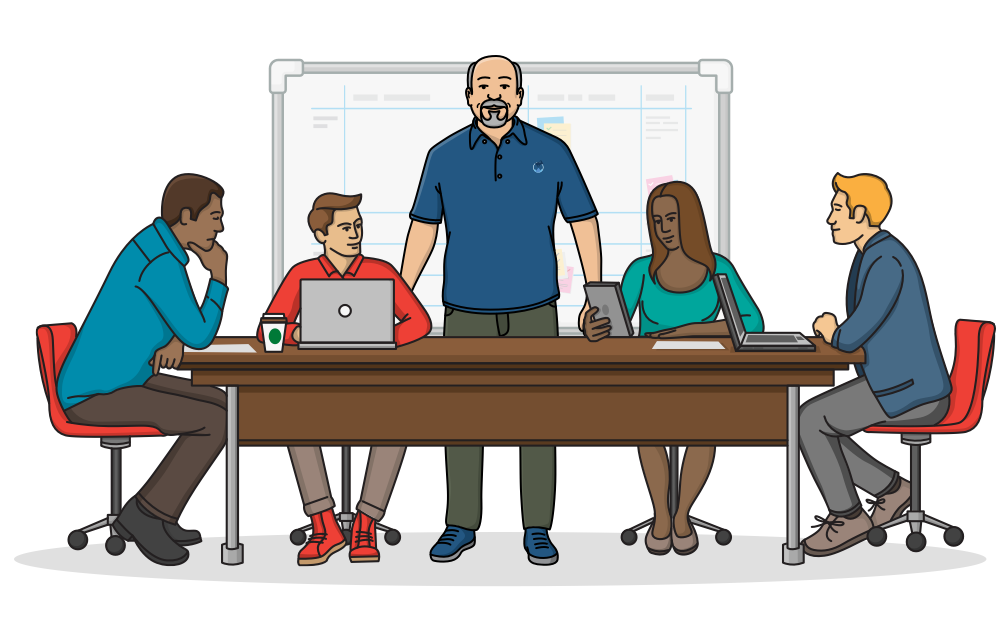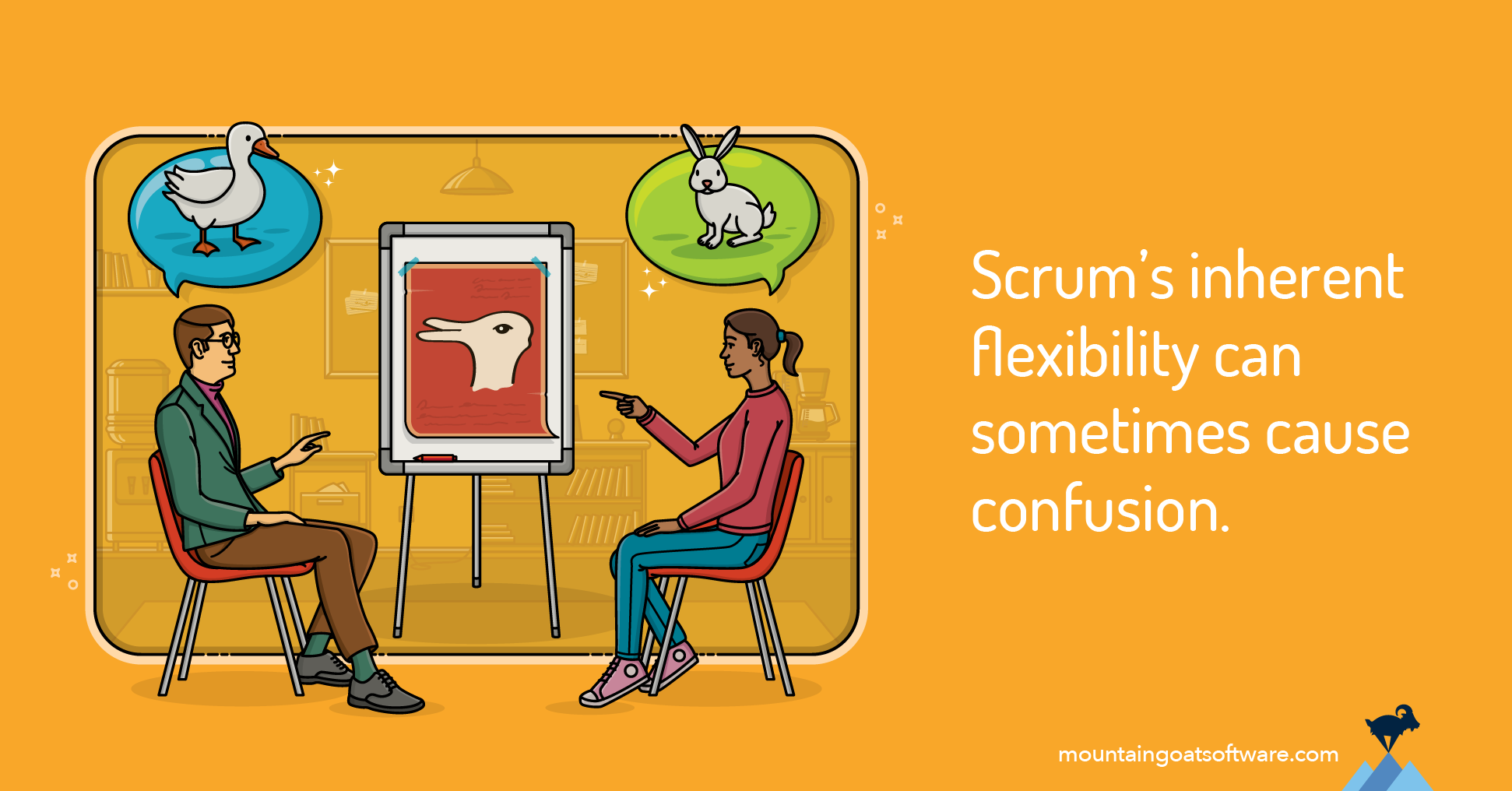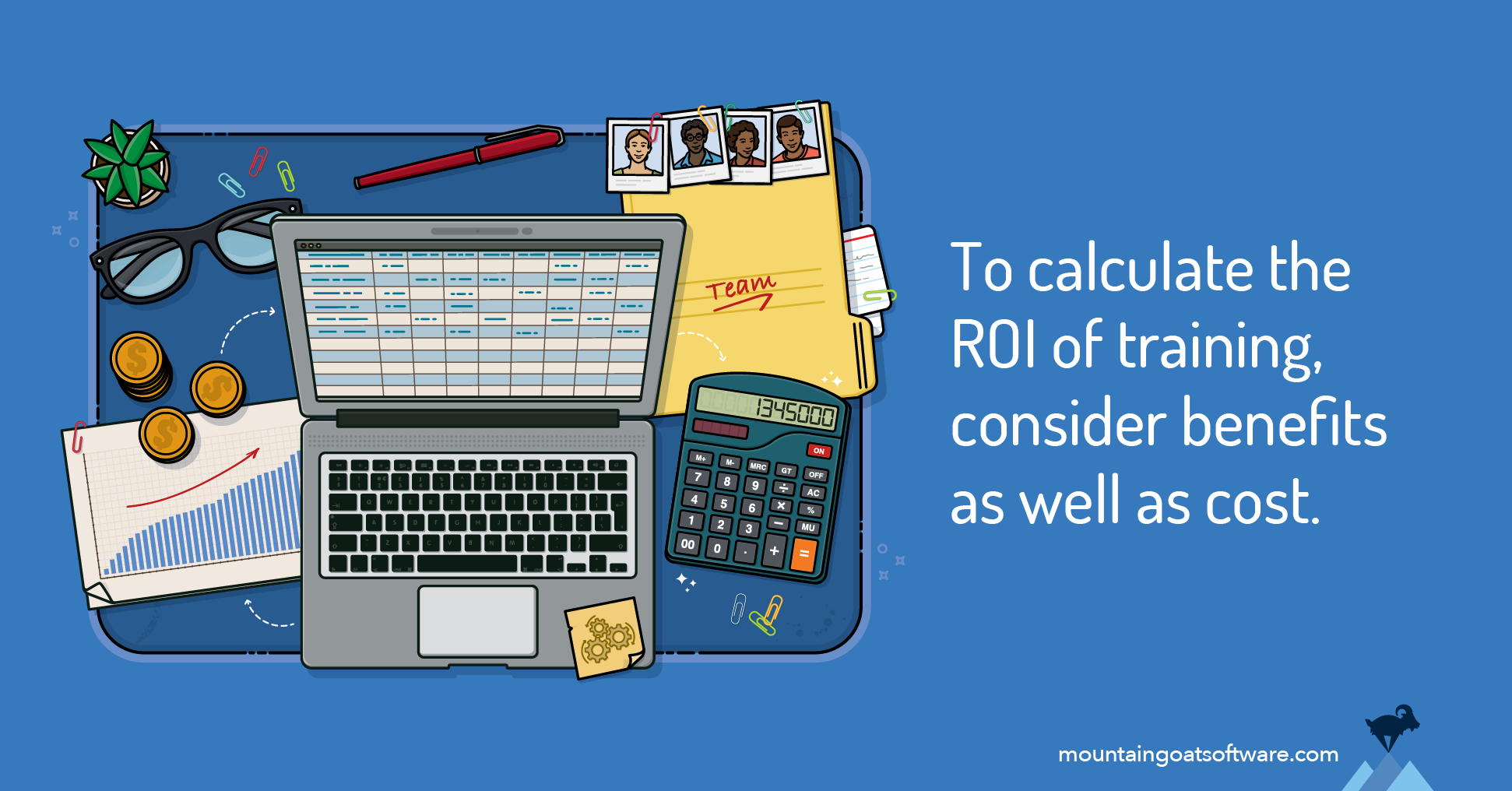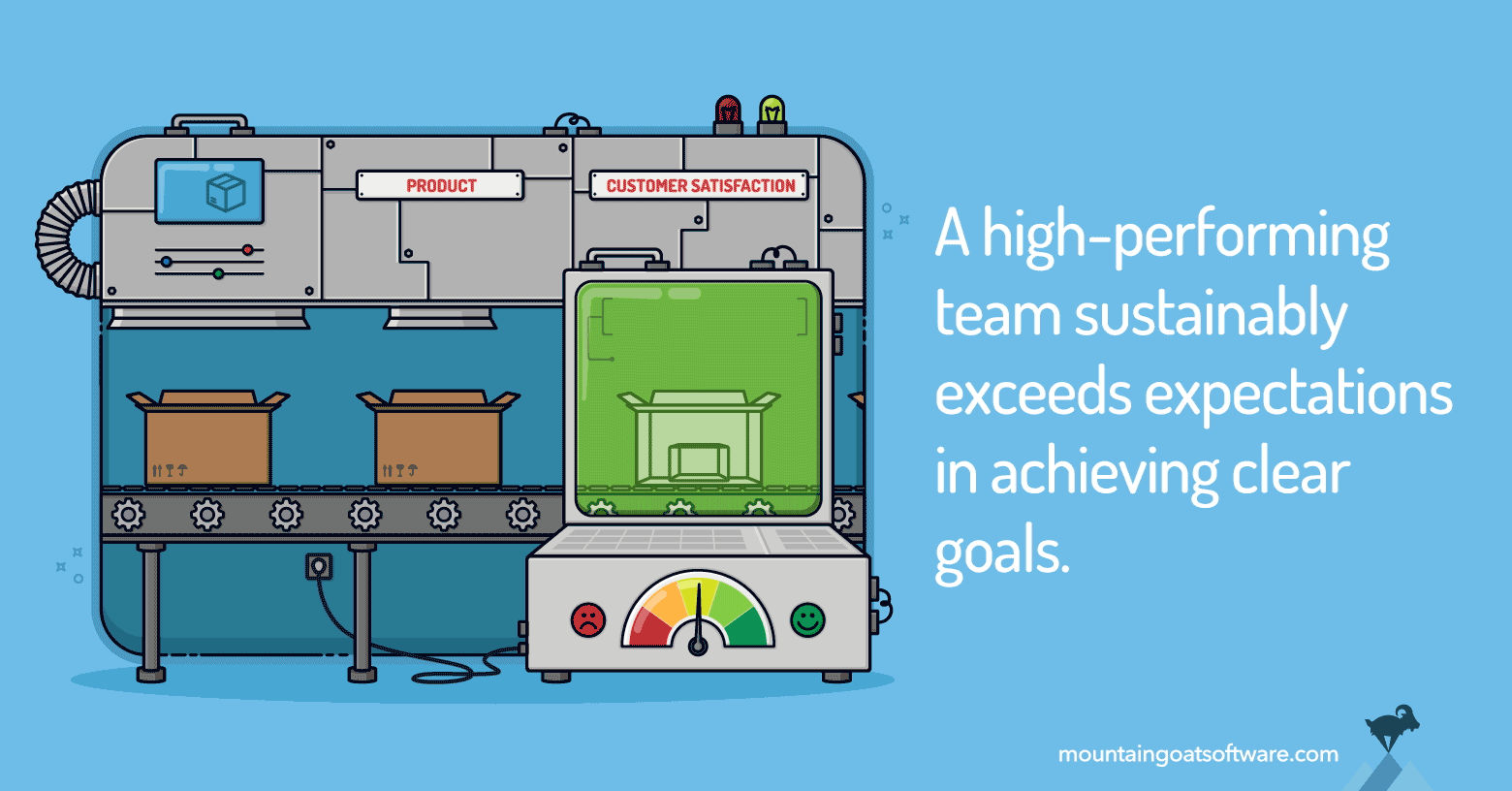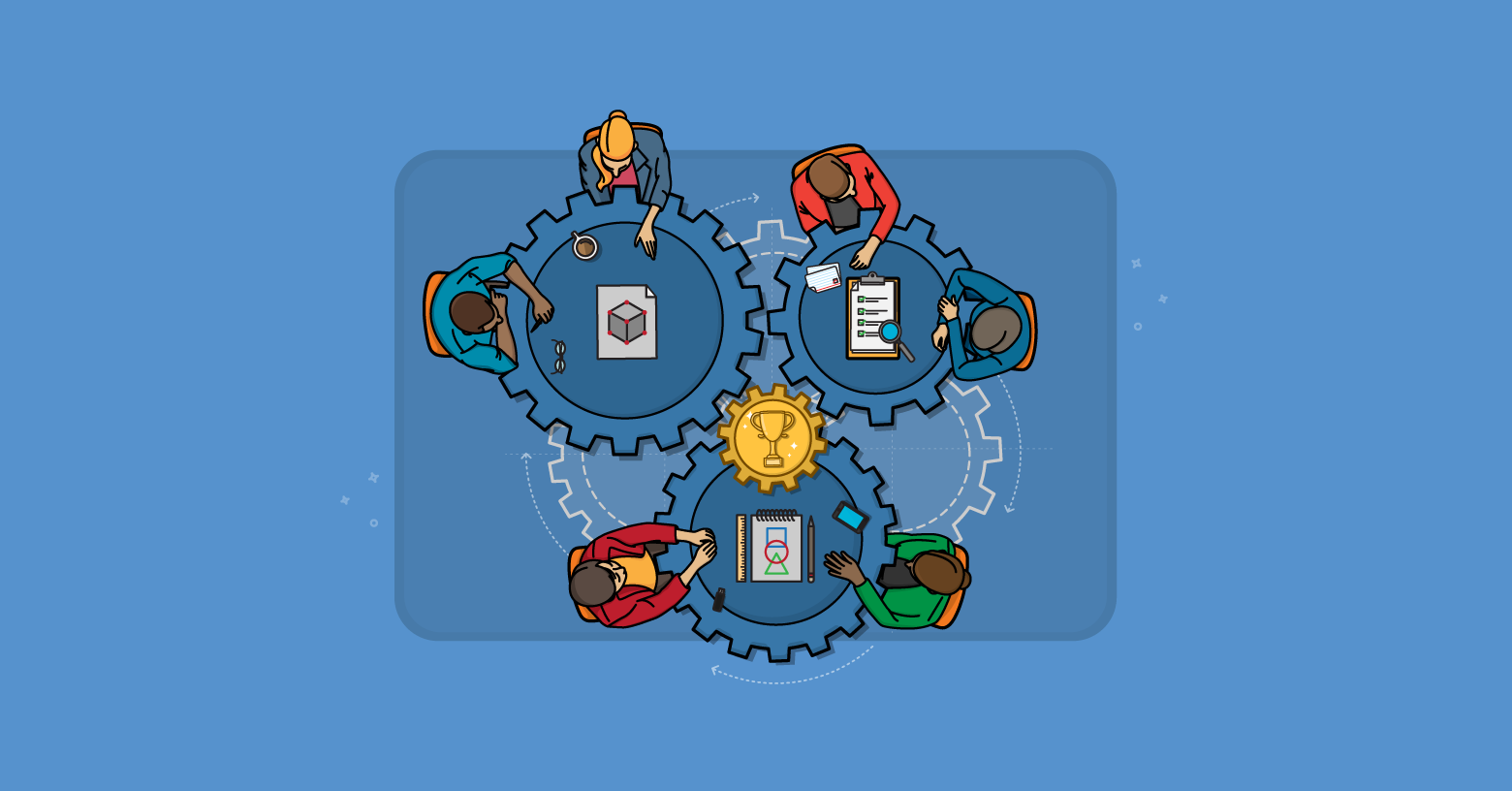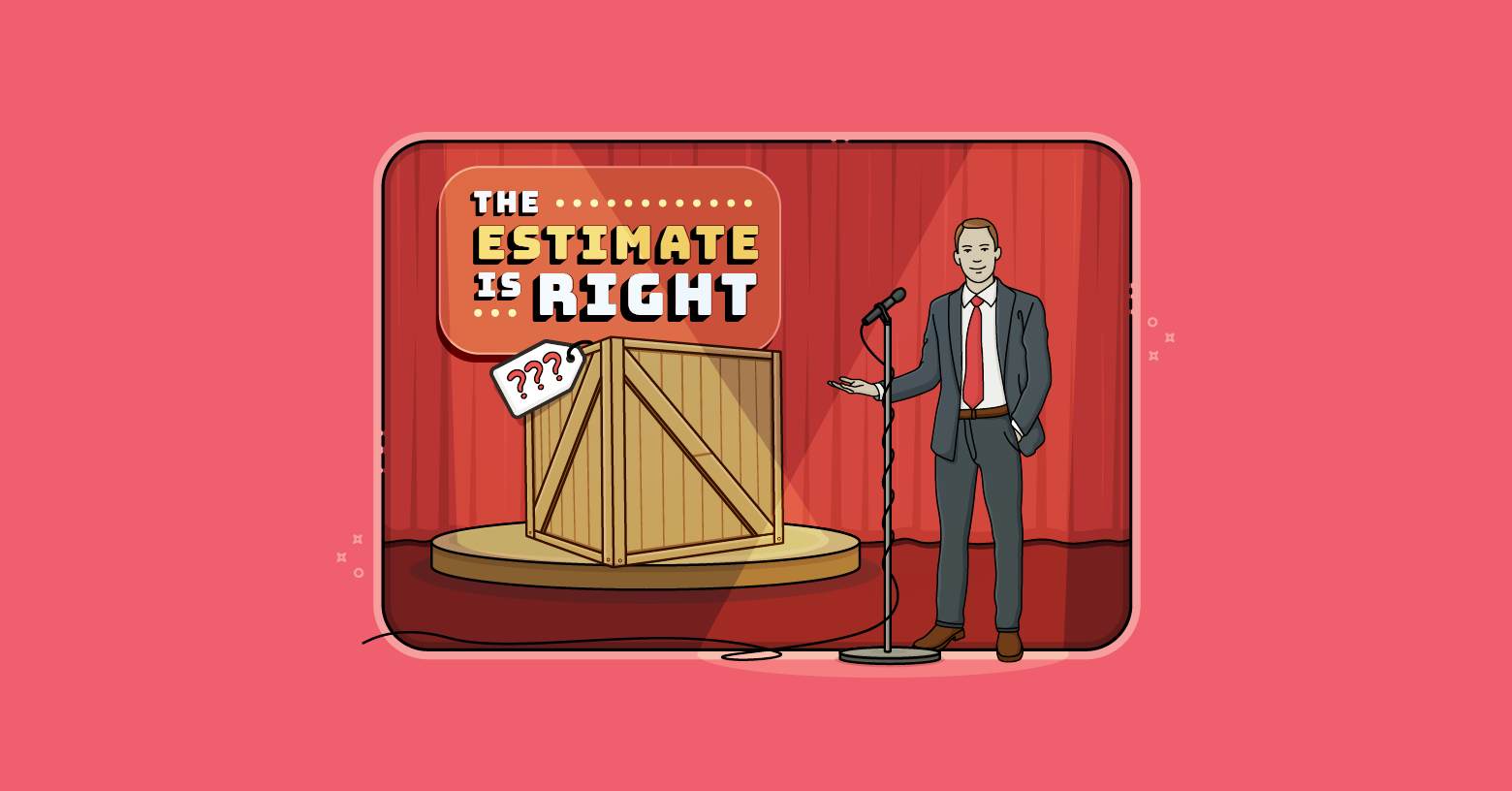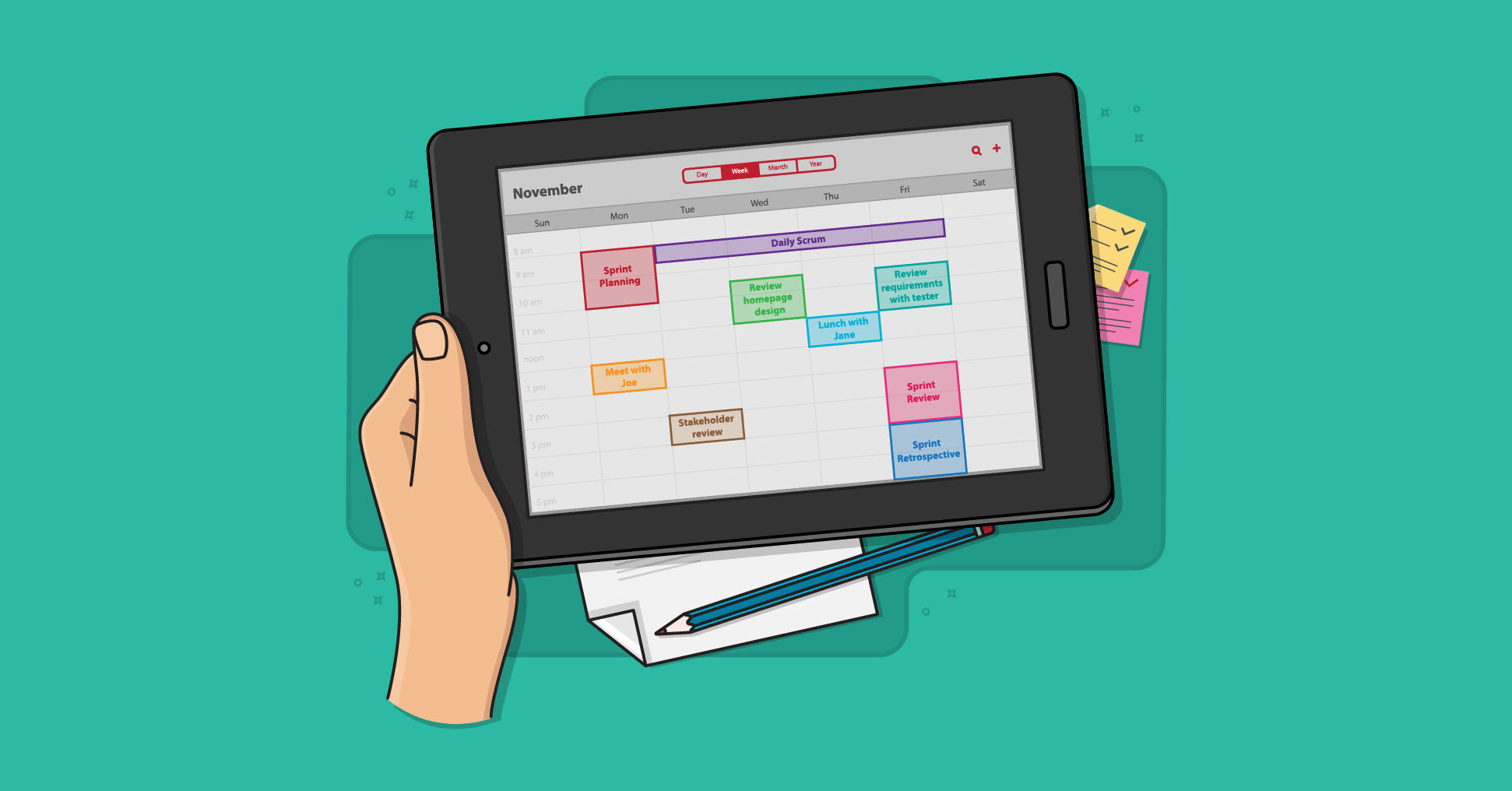An agile transformation is the ongoing process of adopting agile values, principles, and practices to improve business outcomes. Successful agile transformations result in cost savings, improved customer satisfaction, and faster time to market.
Agile transformations don't succeed by accident. Sustainable change takes time, effort, commitment, and planning.
Most organizations know this, so they invest in training, roll out new tools, adopt Scrum or another framework, and perhaps bring in agile coaches. Some organizations start small, with one or two teams so that they can uncover challenges and learn from their experiences before expanding their effort. Others go all in, transitioning many teams at once. (Read more about this in "Choosing to Start Small or Go All In When Adopting Agile.")
These are all steps in the right direction but they’re not enough on their own.
For the past two decades, we’ve worked closely with teams in every kind of environment—from tightly regulated industries to fast-paced startups—and across products, platforms, and services. We’ve seen what gets in the way and what engenders transformation.
In our experience, sustainable change depends on five essential pillars: mindset, practices, roles, teamwork, and support. When even one of these pillars is missing or neglected, progress stalls. But when all five are reinforced, an agile transformation can thrive.
Let’s take a closer look at each one.
Pillar One: Mindset - Think Agile to Be Agile
At its heart, agile is a way of thinking. An agile mindset embraces change, values collaboration, and views failure as a learning opportunity. Without this mindset, people might go through the motions of an agile framework like Scrum without ever truly benefiting from it.
Mindset change is one of the most common challenges we hear about. In our survey of agile practitioners, this typical comment highlights the barriers:
“It’s difficult to shift people's mindset from delivering a big bang solution to delivering iteratively.”
Another noted:
“Leadership says we’re agile, but they still demand the same old waterfall deadlines.”
Others described the challenge this way:
“Teams are ‘doing agile’ but don’t believe in it. They still think of change as failure.”
If you’re championing an agile transformation, it’s critical that everyone understands why they are working differently. That understanding empowers them to make better decisions in ambiguous situations. It also means they’re more likely to respond well to uncertainty or obstacles.
Problems with an agile transformation when mindset is ignored
You might hope that once a handful of agile practices are in place, an agile mindset will seep in all by itself. In my experience, this isn’t the case. For your agile transformation to succeed, you need to consciously establish the new way of thinking.
Without a concerted efffort to explain why new practices are in place, progress stalls. People disengage, see the agile transformation as an external imposition, and lose the willingness to inspect and adapt. Over time, trust erodes between team members and between teams and leadership.
In this kind of environment, any gains quickly become temporary as people revert to old ways of working.
Warning signs that your agile transformation is in trouble
We often see organizations where agile has been implemented unevenly. Some parts of the business strictly follow Scrum, others think they're agile because they use Jira. This inconsistency in what it even means to be agile leads to confusion and disillusionment.
Improvements to try now
To build alignment, try inviting individuals to share stories of what agility looks like when it’s working well. Or run a simple retrospective-style session where people list behaviors that feel agile and those that don’t. When you surface differences in interpretation, you create the opportunity for meaningful discussion—and practical improvements.
You’ll find more ideas in this post: How to Get Teams Aligned on What It Means to Be Agile
Pillar Two: Practices - Put Agility Into Action
If mindset gives you the why behind an agile transformation, practices give you the how. User stories, backlog refinement, sprint planning, and iterative, incremental delivery are the day-to-day tools of agile teams.
Agile practices help agile teams plan, collaborate, and deliver effectively. When done well, they increase transparency, expose risks early, and foster alignment.
Respondents to our agile challenge survey were clear about where things go off track.
One wrote:
“We don’t know how to break stories down small enough to finish in a sprint.”
Another shared:
“Backlog refinement is inconsistent and often skipped due to time constraints.”
And perhaps most tellingly:
“Planning takes hours and still no one knows what they’re working on Monday morning.”
Problems with an agile transformation when practices are ignored
Without implementing new practices, people tend to operate largely as they did before, creating an organization that is agile in name only. More than that, poor agile practices create a lack of visibility. Work piles up unfinished, quality suffers, and feedback loops break down. Even motivated teams struggle to deliver consistently without practical tools that support agile ways of working.
Warning signs that your agile transformation is in trouble
It's usually easy to tell when you are struggling with one or more agile practices. The challenge comes in identifying exactly where the problem lies and how to address it. Here are just a few of the common issues we see:
- Daily Scrum: The daily scrum becomes a status report to the Scrum Master rather than a collaborative planning session for the day.
- Sprint Length: Sprints are too long to create a regular cadence, or too short to finish meaningful work.
- Sprint Planning: People emerge from planning unclear on the goal or overcommitted on scope.
- Writing Stories: Stories are too large or vague to complete in a single sprint.
- Retrospectives: People repeat the same surface-level observations in every sprint retrospective without addressing root causes.
- Siloed Work: Work does not overlap: design is fully done before development, and development is finished before testing begins.
- Estimating: Agile estimation becomes a painful debate or is skipped entirely, leading to unpredictable delivery.
Mountain Goat Software offers training and mentoring on many of these specific topics, from writing better stories to facilitating more effective retrospectives.
Improvements to try now
Training and coaching should happen in conjunction with assessments to address skill gaps and support the continuous improvement needed for sustainable and effective transformation. Mountain Goat offers free resources and tools to help assess the specific practice issue that’s holding you back:
Elements of Agile is a free assessment tool designed to help you evaluate how well your team or organization is progressing toward agility. It identifies strengths, highlights areas for improvement, and provides a clear report so you can focus your efforts where they’ll make the biggest impact.
The Personalized Guide to Agile is free, customized report that recommends practical steps to improve your agile practices based on your unique goals and challenges. Complete a short quiz and receive tailored resources to help you work more effectively.
A free video series that provides a solid overview of the key Scrum practices and how they work together.
Continuous improvement is a key agile tenet, one that frequently requires continuing education. The free Mountain Goat ROI calculator helps you estimate the return on investment from agile training by comparing potential benefits against costs. It includes calculation guidance, key metrics, and success stories so you can confidently assess the value of your investment in training.
Pillar Three: Roles - Clarify Who Does What
Agile introduces new roles and redefines existing ones. New roles like Scrum Master, product owner, agile coach, and even Scrum team member (developer) bring new responsibilities and shift old ones. But without clarity around the boundaries of these roles, transformation stalls.
In the words of one practitioner:
“We have a PO, but everything still goes through the VP.”
Another added:
“Nobody really knows what the Scrum Master is supposed to do, so they just schedule meetings.”
And a third summed it up this way:
“Too many cooks in the backlog.”
Problems with an agile transformation when role clarity is ignored
If roles are not clarified, people will be confused about their responsibilities. This creates bottlenecks, with important work delayed while people wait for approvals. Alternatively, decisions are made but are made inconsistently. When roles are fuzzy, accountability also suffers, and with it, trust and velocity.
Sometimes a transformation stalls just because people are unsure of who should be doing what, not because people aren’t bought in or working hard.
Warning signs that your agile transformation is in trouble
Role confusion can look like: unclear authority over the backlog, people bypassing the Scrum Master, or multiple stakeholders giving conflicting directions. Sometimes people step into agile roles with leftover expectations from traditional hierarchies, or never land on a shared understanding of who is responsible for what.
Improvements to try now
You can improve alignment by doing the following three things:
Clarify roles and responsibilities
Ensure everyone understands their role. For example, the product owner is responsible for prioritizing the backlog, the Scrum Master facilitates the process, and the team of developers self-organizes to deliver the work. Misunderstandings often stem from unclear expectations.
Encourage self-organization
Self-organizing teams are empowered to make decisions about how they work, within a set of shared values and rules set forth by management. If people are hesitant to decide, resist stepping in to make decisions for them. Instead, reiterate that the decision is theirs and support them in their choice.
Facilitate communication
If multiple stakeholders or businesspeople are providing conflicting priorities, work to establish a single source of truth, such as a clear roduct owner. Encourage stakeholders to resolve conflicts among themselves before bringing priorities forward.
Clear role definitions will increase alignment and reduce friction. When everyone understands who’s accountable for what, people feel empowered to act decisively and deliver value, improving morale and productivity. For an introduction to the Scrum roles and responsibilities, visit: https://www.mountaingoatsoftware.com/agile/scrum/roles
Role Clarification Resources
 Would you make a good Scrum Master?
Would you make a good Scrum Master? 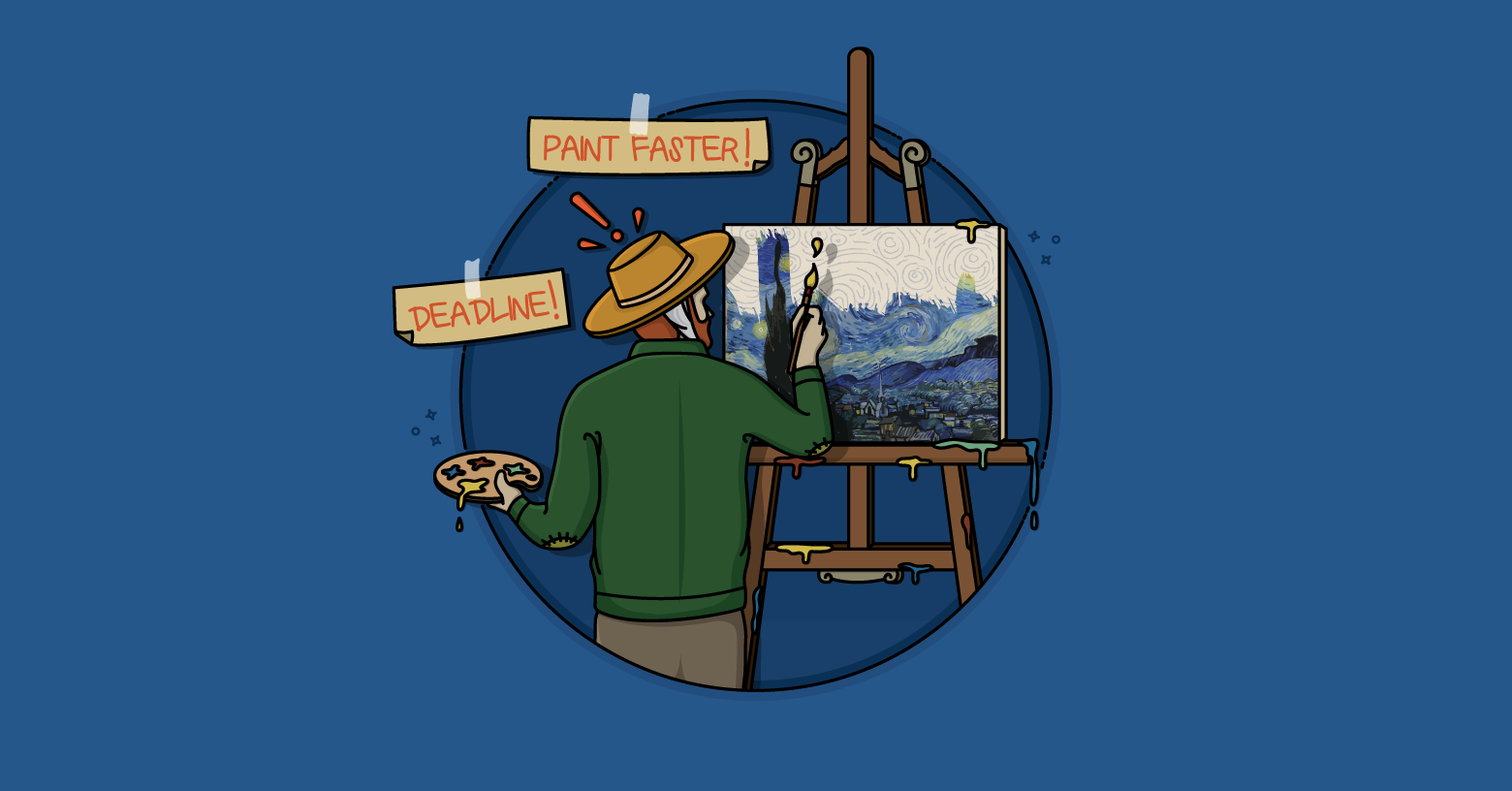 How to become a great product owner
How to become a great product owner 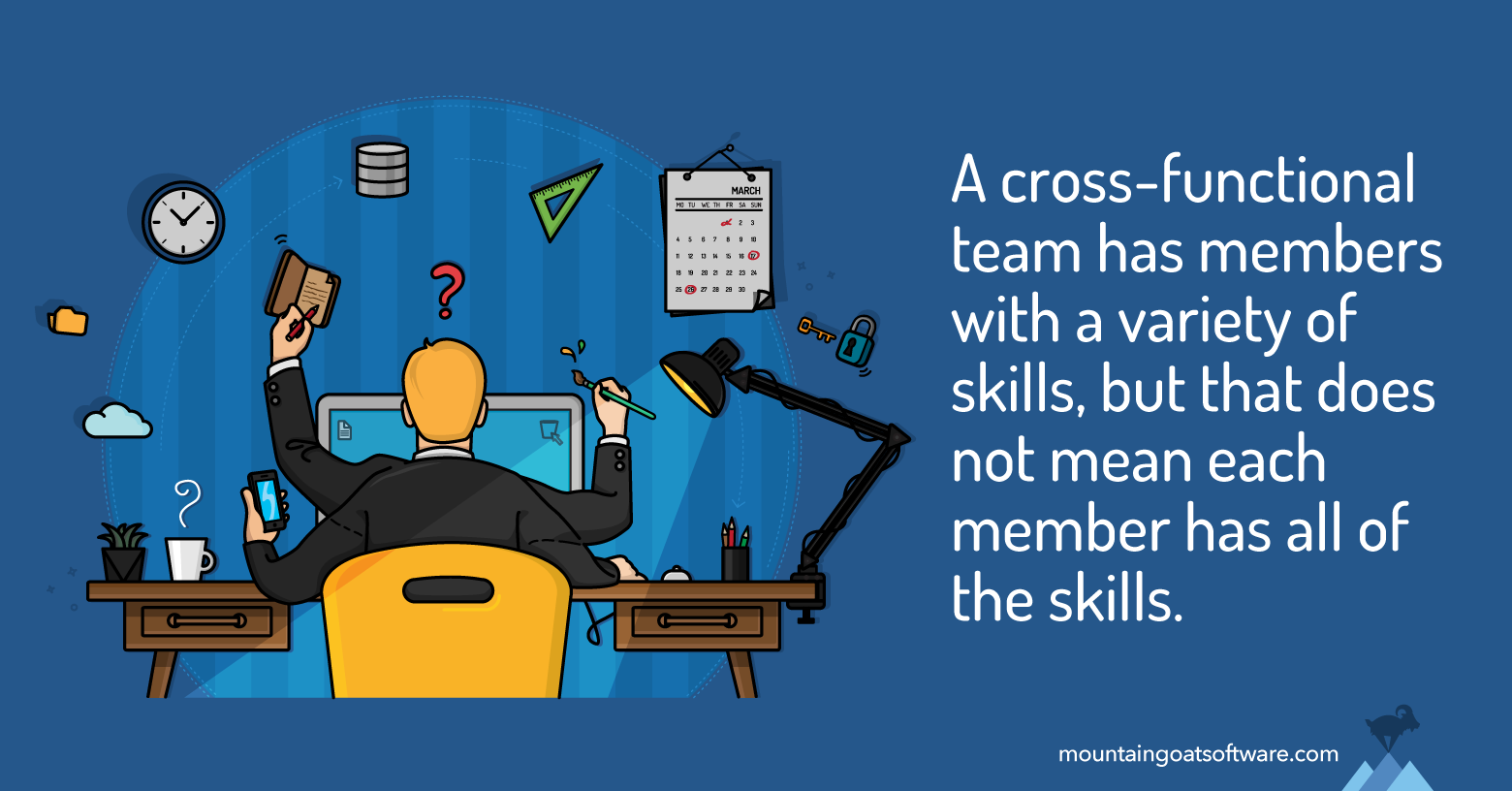 Clarifying Cross-Functionality
Clarifying Cross-FunctionalityPillar Four: Teamwork - Collaborate to Deliver
Success with an agile transformation depends on how effectively everyone (including developers, testers, UX designers, analysts, and so on) works together to deliver value. In other words, success requires teamwork and agile collaboration.
Effective agile teamwork enables fast delivery, and continuous improvement. When people collaborate effectively, they complete stories within short iterations and adapt quickly to change.
But it’s not always easy to just ‘work well together.’ We heard from practitioners who weren’t seeing successful collaboration within a Scrum or agile framework:
“We still hand off work between developers and testers like we did before agile.”
“Our team is remote and barely talks outside of standups.”
“One or two people carry the sprint every time.”
Problems with an agile transformation when teamwork is ignored
Without improvements in teamwork, organizations will see limited gains. People fall into silos and work becomes sequential, making knowledge-hoarding more likely. Over time, this can lead to burnout and disengagement.
You may find that people are hitting a wall with their delivery pace, and no amount of process change or overtime is helping to improve the situation.
Warning signs that your agile transformation is in trouble
Common breakdowns include work done in isolation instead of shared ownership, with a feeling of “I’ve done my part, now it’s their turn.”
People might delay testing until the end of the sprint. Certain individuals may consistently do most of the work. Or people may have a general sense that they work well together but struggle to pinpoint what that looks like in practice.
Improvements to try now
To improve collaboration, start by making work visible and ensuring goals are shared. Try swarming: get two or three people working on one story at the same time to build shared ownership. Look for ways to reduce handoffs and encourage knowledge-sharing.
If you're not sure what to change, consider using the traits of high-performing agile teams as a discussion tool: What Is a High-Performing Agile Team?
Pillar Five: Support - Gain Buy-In Beyond the Team
The fifth pillar of transformation is often the most overlooked: how others—leaders, stakeholders, adjacent departments—interact with and support agile teams.
Leadership buy-in and engagement at all levels is essential for a successful agile transformation. Strong agile leaders foster a supportive culture in the following ways:
- Allocate resources
- Set the vision
- Communicate the goals for agile transformation
- Celebrate achievements, big and small
- Alleviate resistance to change at all levels of the organization.
Even the most agile of teams will struggle if the surrounding organization operates with old assumptions. If stakeholders demand delivery dates without negotiation or leaders expect certainty instead of adaptability, teams face an uphill battle. For example:
“Stakeholders expect exact dates but don’t come to reviews or refinement.”
“We’re agile, but leadership still thinks in terms of big up-front plans.”
“Changing priorities are dropped in, mid-sprint by senior leaders with no discussion.”
Problems with an agile transformation when support is ignored
Without adequate support and understanding, team members become frustrated from being pulled in too many directions. Stakeholders see only missed expectations. Product owners become order-takers instead of collaborators. Over time, people may start to hide issues or disengage entirely. As a result, the agile transformation becomes a source of tension not improvement.
Warning signs that your agile transformation is in trouble
One of the most common breakdowns is expecting predictability without participation. Leaders may want reliable delivery, but if they skip reviews and avoid refinement sessions, they rob the team of alignment. Similarly, if estimates are misunderstood as commitments, teams can feel pressured to inflate numbers or pad buffers.
Improvements to try now
To reset expectations, involve stakeholders early and often. Encourage stakeholders to attend reviews, not just as a ‘demo,’ but to ask questions and give feedback.
Try to foster a team mentality: Frame challenges, such as tight deadlines or scope issues, as shared problems. Encourage collaboration between the team and stakeholders to find solutions that balance business needs with the team’s capacity.
If estimation is a contentious issue between the team and stakeholders, consider reviewing how your teams talk about and use estimates. Are estimates helping or hurting team focus? They can sometimes help developers make trade-offs but sometimes they cause more confusion than clarity. For more, read: Are Estimates Ever Helpful to Developers?
Start Where You Are. Improve Iteratively.
No agile transformation begins with everything figured out. That’s why we encourage iterative and incremental improvement to continuously identify and pursue changes that will make work less cumbersome and more efficient.
Use the five pillars to assess where your organization is today in its agile transformation, and decide where to focus next. Each improvement you make supports the others. That’s how real, lasting agility takes hold.
Ready to Put These Five Pillars into Practice? If your team is struggling with misalignment, inconsistent results, or stalled progress, our Working on a Scrum Team course can help.
In just two live, online days, your team will learn side-by-side through interactive exercises and real-world scenarios, leaving with a shared understanding and practical tools to succeed.
Bring your whole team, or a few key change-makers, and return ready to deliver every sprint. Read more about the course and register here.
Last update: December 15th, 2025

